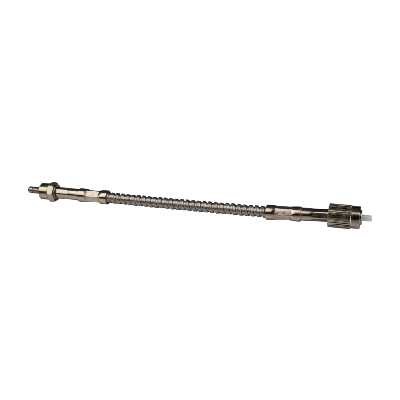DosimeterRadiology
Scintillating optical fiber solution for radiology dosimetry
SEDI-ATI designs scintillating fiber optic probes for dosimeter applications applied to radiology.
MajorContraints
- Extreme and confined environments with X-rays and Gamma-rays,
- Robustness to support the patient’s weight,
- Real time mapping with ultra-compact invisible devices,
- Very low bending radius with scintillating optical fibers.
TheChallenge
Quantify the level of radioactive exposure received by a patient during a radiological examination (CT or IRM scan).
A societal issue: measuring the radiation dose rate received by the patient
X-rays are nowadays essential in the characterization and metrology of materials, objects and living species, as well as in certain therapies such as cancer therapy for example. One of today’s societal challenges is the quantification of the level of radioactive exposure of the patient during a radiological examination such as a CT or MRI scan.
The idea is to place an ultra-compact and flexible X-ray detector either under or inside the mattress, or even in the headrest, of the examination table where the patient stands.
A unique know-how: splicing between different types of large core optical fibers
SEDI-ATI has a long experience on splicing scintillating optical fibers with plastic optical fibers on both ends to perform a radiation probe. SEDI-ATI has mastered the mechanical process to make a splice on this type of fiber. The junction between the two fibers (plastic and scintillating) is then protected by a stainless steel tube. The splicing between the two fiber types, having a similar 500 µm diameter, is not feasible by fusion but needs to be done by a mechanical process.
Radiation sensors based on scintillating and plastic optical fibers
Two solutions are being studied. The first one consists in a fibered probe, of a 500 µm plastic optical fiber and a 500 µm scintillating X-ray sensitive fiber optic section.
The second one is a woven mesh of scintillating optical fibers, which could in addition make it possible to very finely locate the position where the radiation was received.
NANOPTiX: a pioneering program of the ANR
Thanks to its notoriety on scintillating fibers, SEDI-ATI is the industrial partner in the NANOPTiX project of the French National Research Agency [ANR]. The research project aims to develop the next generation of miniaturized X-ray sensors with faster response time, higher sensitivity and crosstalk free.
This project targets tiny X-ray probes integrated at the end of narrow fibers of the size of a human hair. To this end, NANOPTIX will exploit, for the first time, the concept of Nano-Optical Antenna (NOA) for controlling the X-ray excited luminescence (XEL) from scintillators.
SEDI-ATISolution
The dosimeter for radiology integrates a radiation probe consisting in a 500 µm scintillating fiber spliced on both ends to 500 µm plastic fibers, and placed beneath or even inside the patient’s mattress
AdvantagesSEDI-ATI Solution
- Opacity of the protection coating of the optical fibers against parasitic emissions (ambient light, neon light…).
Related product
Radiation-resistant fiber optic cables
Optical fibers gather numerous advantages encouraging to integrate them in applications with radiative environments, associated with the civil, space or defense fields.



